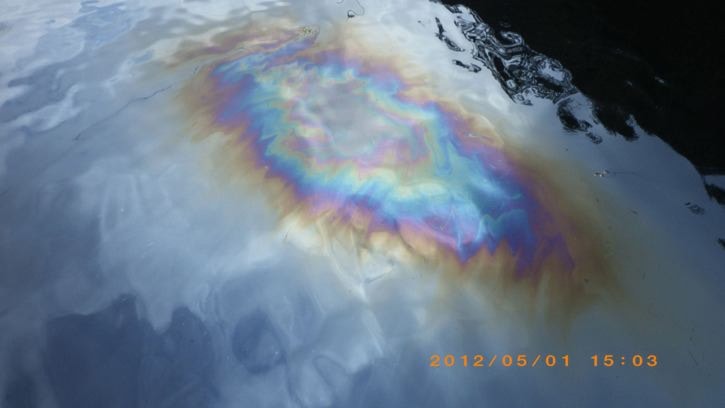The Canadian Coast Guard says that the divers have been hired and preparations are being made for them to investigate the wreck of the WWII-era US artillery ship Brigadier-General M.G. Zalinski to discover the the source of the fuel leak spotted near Hartley Bay on Wednesday.
The equipment for the dive is being moved into place on Friday, which will include Coast Guard equipment for cleaning up anything else that might be released from the wreck. But tidal conditions are expected to keep them from actually going down to the wreck until Saturday to ensure the safety of the divers.
“ We'll make an assessment of the vessel when we go down, take a look at the condition. There were some diver surveys done previously not so long ago, but that's an important thing to double-check. Once they can make a connection to where the fuel is being released, we'll undertake operations to stem that leak,” says Cost Guard representative Dan Bates.
Although the cost guard won't know the exact cause of the leak until the divers go down there, it is believed that the Zalinski is leaking a substance known as “bunker C.”
“Bunker C is a heavy fuel product that's used on deep ocean ships. It's a thicker, less refined version of petroleum. It's a black tar-like stuff,” says Bates.
Representatives from Environment Canada, the Coast Guard and Transport Canada did a fly-over of the sheen that was spotted on the water on Wednesday.
“That plane stacked with equipment that looks at the density and the characteristics of fuel on the water,” explains Bates.
While original estimates were lower, the plane's equipment determined that there was only about 1 litre of oil on the surface of the water, a very small amount. There hasn't been another oil sheen spotted on the water since then.
“That sheen that was spotted on Wednesday was not only minimal, but also non-recoverable,” says Bates.
There won't be any plan for how to stop any more leaks until the divers get the chance to go down to the wreck to investigate and find out where it came from.
“It's an old wreck, it's quite rusty. It's possible that some of the rust has flaked off and allowed some oil from the tanks out. There was patching done in 2003 and 2005 to take care of some of the immediate issues so there may be leaks coming from those areas. But we won't really know until we get divers down there to take a look,” says Bates.
Representatives of the Gitga'at First Nation are also at the site and have taken water samples to be analyzed.
Bates says that the Coast Guard has actually trained for this exact situation. In 2010 Prince Rupert members of the Coast Guard did joint training exercise with the US Coast Guard in the Dixon Entrance. One of the scenarios they practiced was there was a large fuel leak from the Zalinski.
We'll have more on this story as it develops.
